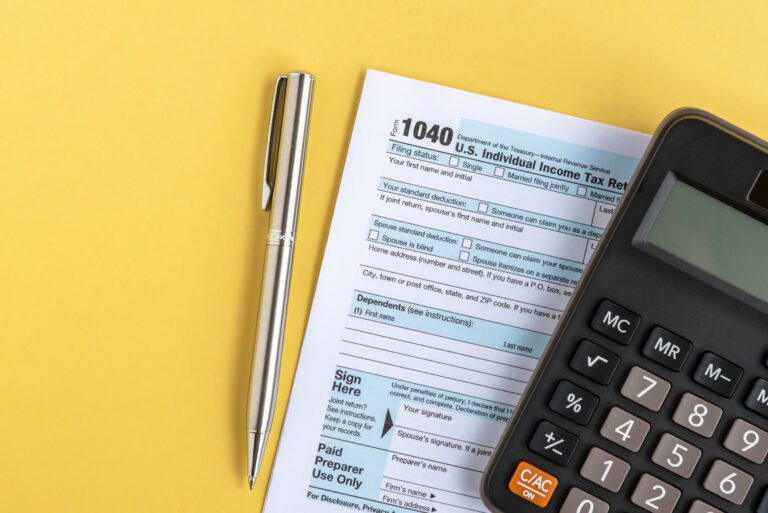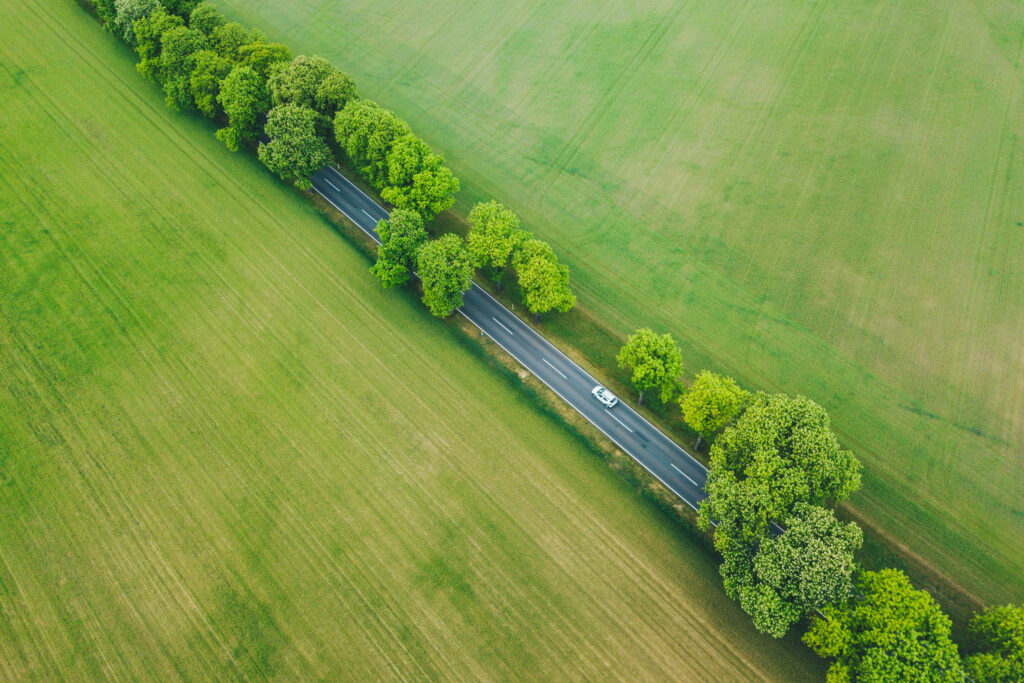Quality Verified | Updated March 11, 2022
The X's and O's of Rebates
Maximize value and minimize cost by taking advantage of existing federal and state EV rebate programs.

by Alec Slatky
AAA Public & Government Affairs

Despite their higher purchase price than gas-powered cars, electric vehicles can be more cost-effective in the long-term through fuel savings. But not everyone can afford the initial sticker price, so state and federal policymakers have created rebate programs to make EVs accessible to more people. When incentives are easy to get, drivers are more satisfied with their purchase, so we’ve compiled this guide to rebates in our territory.
The Federal Rebate
The federal government offers a tax credit of up to $7,500 for the purchase of a new fully electric or plug-in hybrid vehicle. The tax credit is nonrefundable, which means:
- You have to wait until you file your taxes to receive the benefit
- It reduces the amount of tax you owe, but if you don’t owe enough tax, you can’t claim the full credit. If your total tax bill for the year (including withholding) is $10,000, and you are entitled to a $7,500 credit, your new bill would be $2,500. But if your total tax bill is only $4,000, your new bill would be $0 – you wouldn’t get to claim the rest as a refund.
Fully electric vehicles are eligible for the $7,500 credit, while plug-in hybrids are eligible for lower amounts based on battery capacity – the larger the battery, the bigger the credit. FuelEconomy.gov lists the specific amounts for each vehicle, such as:
- 2022 Ford Escape PHEV – $6,843
- 2022 Hyundai Santa Fe PHEV – $6,587
- 2022 Kia Nero PHEV – $4,543
- 2022 Subaru Crosstrek Hybrid – $4,502
Hybrid vehicles that don’t have a place to plug in, like the Toyota Prius, aren’t eligible for the credit.
Importantly, Tesla and GM vehicles aren’t eligible for the rebate. Why not? When the law establishing the tax credit was passed in 2009, the goal was to encourage a variety of manufacturers to make EVs. As a result, an automaker’s cars were no longer eligible for the credit once they sold at least 200,000 EVs (after a phase-out period). Tesla and GM breached that threshold a few years ago, and Toyota did earlier this year, so tax credits for their vehicles will be reduced on October 1, 2022, and eliminated entirely on October 1, 2023. Nissan and Ford could be next, having each sold over 150,000 EVs.
Vehicle Incentives
Connecticut offers incentives for purchases and leases of new vehicles with an MSRP under $50,000, with low-income individuals qualifying for additional rebates as well as discounts on used vehicle purchases:
| Vehicle type | Standard rebate | Rebate+ |
New BEV | $2,250 | $2,000 |
New PHEV | $750 | $1,500 |
Used BEV | $0 | $3,000 |
Used PHEV | $0 | $1,125 |
Standard rebate is available to everyone.
Rebate+ is available to qualifying low-income individuals.
The standard rebate is at the point of sale – which means that the discount will be applied to the purchase price of your vehicle – but it can only be claimed if you buy from a dealer (except for Teslas, which don’t have dealers in Connecticut). Just fill out a short survey and the dealer will complete the paperwork for you.
To obtain the Rebate+, you complete the paperwork yourself after the purchase. To qualify, you must be enrolled in a specific program such as SNAP, Head Start, Medicaid, etc. – the full list is available here.
The rebates are popular: since the program began in 2015, it has given out over 8,000 rebates worth over $13 million.
The fine print:
- The car must come from a list of eligible new or used vehicles
- Each individual is allowed two CHEAPR incentives, and the second one must be at least 24 months after the first one
- The rebate may be considered taxable income by the IRS
Massachusetts offers incentives for purchases and leases of eligible new vehicles with an MSRP under $50,000. Fully electric vehicles are eligible for $2,500 and PHEVs can get up to $1,500.
You must purchase or lease the vehicle from a dealer in Massachusetts, except for eligible vehicles that don’t have dealers in Massachusetts (i.e. Teslas). After the transaction, fill out the application either online or by mail within 90 days of purchase.
The rebates are popular: since the program began in 2014, it has given out over 25,000 rebates worth over $50 million.
The fine print:
- The vehicles must be retained and registered in Massachusetts for at least 36 months
- Funds are allocated on a first-come, first-served basis – so apply right away after you finalize the purchase – and no later than 90 days after
- The rebate may be considered taxable income by the IRS
New Jersey offers incentives for purchases and leases of eligible new BEVs and PHEVs.
The rebate amount is based on the all-electric range and the MSRP. Vehicles with an MSRP under $45,000 can claim a maximum rebate of $4,000, and cars with an MSRP between $45,000-55,000 can earn a maximum rebate of $2,000. More expensive vehicles don’t qualify. The specific rebate is determined by multiplying the all-electric range by $25, with the following examples:
- 2022 Audi Q4 – $2,000
- 2022 Chevrolet Bolt – $4,000
- 2022 Ford F-150 Lightning – $2,000-4,000 (depends on the trim)
- 2022 Chrysler Pacifica PHEV – $800
- 2022 Subaru Crosstrek PHEV – $425
- 2022 Toyota RAV4 Prime – $1,050
The standard rebate is at the point of sale – which means that the discount will be applied to the purchase price of your vehicle – but it can only be claimed if you buy from a dealer in New Jersey. The dealer will give you the discount on your purchase and then apply for reimbursement from the state.
The rebates are popular: since the program began in 2020, it has given out over 12,000 rebates worth over $53 million.
The fine print:
- You must remain a New Jersey resident for at least 2 years after the vehicle transaction date
- The vehicles must be retained and registered in your name for at least 36 months
- You can claim a maximum of 3 incentives during a 10-year period
- The rebate may be considered taxable income by the IRS
Battery electric vehicles (but not hybrids) are also exempt from New Jersey state sales tax on vehicles, which is currently 6.625%. Additional incentives include discounted toll rates on the New Jersey Turnpike, Garden State Parkway, and Port Authority bridges and tunnels.
New York offers incentives for purchases and leases of eligible new BEVs and PHEVs.
The rebate amount is based on the all-electric range and the MSRP. Any vehicle with an MSRP over $42,000 and/or an all-electric range under 40 miles qualifies for a $500 rebate. Vehicles with an MSRP under $42,000 are eligible for a $2,000 rebate if their all-electric range is over 200 miles and a $1,000 rebate if the range is between 40-199 miles. Some examples of vehicles include:
- 2022 Ford Mustang Mach-E – $500
- 2022 Hyundai Kona Electric – $2,000
- 2022 Jeep Wrangler 4xe – $500
- 2022 Kia Soul EV – $1,000
- 2022 Polestar 2 – $500
- 2022 Toyota RAV4 Prime – $1,000
The standard rebate is at the point of sale – which means that the discount will be applied to the purchase price of your vehicle – but it can only be claimed if you buy from a participating dealer in New York. The dealer will give you the discount on your purchase and then apply for reimbursement from the state.
The rebates are popular: since the program began in 2017, it has given out over 69,000 rebates worth over $88 million.
The fine print:
- The vehicles must be retained and registered in your name in New York for at least 36 months
- The rebate is subject to New York State sales tax
- You must agree to participate in online surveys
Additional incentives include discounted toll rates on the Thruway, and Port Authority bridges and tunnels.
Rhode Island offers incentives for purchases and leases of new vehicles under $60,000 and used vehicles under $40,000, with low-income individuals qualifying for additional rebates:
| Vehicle type | Standard rebate | Rebate+ |
New BEV | $2,500 | $2,000 |
New PHEV | $1,500 | $1,000 |
Used BEV | $1,500 | $1,500 |
Used PHEV | $750 | $750 |
Standard rebate is available to everyone.
Rebate+ is available to qualifying low-income individuals.
To obtain the rebates, you complete the application yourself no later than 120 days after the purchase. To qualify for the additional low-income rebate, you must be enrolled in a specific program such as SNAP, Head Start, Medicaid, etc. – the full list is available here.
The fine print:
- The purchase must come from a dealer (no person-to-person sales allowed)
- Leases must be at least 24 months
- The rebate may be considered taxable income by the IRS
Utility Incentives
Under the EV Charging program, homeowners can receive a $500 rebate toward installing a networked Level 2 charging station, and another $500 toward a wiring upgrade, if one is necessary. The program is administered by the utility companies – UI and Eversource – and rebates are distributed by check after demonstrating proof of purchase and installation.
Customers who installed a smart charger (i.e. connected to the internet) prior to 2022 are eligible for $100. Customers who install a non-networked Level 2 charger are also eligible for $100.
The utilities also operate a “Managed Charging Program” to encourage EV owners to charge off-peak, so the grid doesn’t get overloaded during peak times. Here’s how the program works:
- From June-September, the utilities will announce 13-15 peak “events” per month, all lasting 3 hours and all between 3-9pm from Monday-Friday.
- If you avoid charging during those “events” (you’re allowed two exceptions), you’re eligible to receive $50/month – paid by gift card in the following month
All in all, customer who installs a Level 2 smart charger, upgrades the wiring, and charges all off-peak can earn up to $1,600 over three years.
Various utilities in Massachusetts run programs to encourage EV owners to charge off-peak, so that the grid doesn’t get overloaded during peak times. Here’s how the programs work:
EVERSOURCE
Eversource’s ConnectedSolutions program allows customers to claim a rebate of $300 over 3 years. The program slows charging speeds during “Demand Response Events” when there is a high level of need.
The fine print:
- The events take place on non-holiday weekends from June-September between 2-7pm (and usually last 3 hours).
- You must have a Level 2 WiFi-enabled charger from a list of eligible charging equipment
- The charging speed is slowed to the equivalent speed of a wall outlet
- You’ll receive notifications a day in advance, except for emergency events
- Events won’t be called during severe storms
NATIONAL GRID
National Grid offers two programs that customers can choose from – one that pauses charging during peak “events” during the summer, and one that gives a rebate for every hour you charge off-peak.
The Connected Solutions program pauses charging during peak “events,” when demand for electricity is highest. Participants earn $50 for enrolling in the program and up to $20/year for continuing to participate.
The fine print:
- There are about 40 peak events every year – and they all occur from June to September, from 2-7pm
- You can opt out of a peak event anytime
- Only certain vehicles are eligible (BMW, Chevrolet, Ford, Honda, and Tesla)
SMARTCHARGE
The SmartCharge MA program allows drivers to earn rebates for time spent charging off-peak.
The fine print:
- Off-peak charging periods are 9pm-1pm from Monday-Friday (excluding federally observed holidays)
- Drivers earn $50 for enrolling and then a fixed amount per kilowatt-hour (kWh) of off-peak charging. From June-September, drivers earn $0.05/kWh; from October-May, drivers earn $0.03/kWh. With EV owners typically using about 400 kWh of electricity each month, drivers can earn $12-20/month.
- Rebates are given as a credit on the next month’s electric bill
- Drivers must connect their EV or charger to National Grid’s Charge Smart app
Various utilities in New Jersey run programs to encourage EV owners to install EV chargers and to charge off-peak, so that the grid doesn’t get overloaded during peak times. Here’s how the programs work:
PSE&G
PSE&G runs three programs for EV owners, who can earn hundreds or thousands of dollars of rebates.
The Behind the Meter program reimburses up to $1,500 for the cost of an electrician to install a charger – but doesn’t pay for the charger itself. You must use a licensed NJ electrician and obtain a permit from your municipality, if necessary.
The Pole to Meter program pays up to $5,000 for PSE&G to upgrade service to the property to support new electric load of the charger. This upgrade may not be required – PSE&G will determine whether any such work is necessary.
The final program allows drivers to earn rebates for time spent charging off-peak. Off-peak times includes 9pm-7am Monday-Friday as well as all day Saturday and Sunday. Drivers earn $0.02/kWh for time spent charging off-peak. With EV owners typically using about 400 kWh of electricity each month, drivers can earn $8/month.
The fine print:
- Drivers must be using an approved Level 2 charger to claim the off-peak credit, and provide EV charging data to PSE&G
- Your utility account must be in good standing
- Before installing the charger, complete the PSE&G Electric Service application first – they will let you know if you qualify, and then your electrician will need to send a form to PSE&G so they can determine whether a service upgrade is needed before proceeding with the installation.
- The Behind the Meter incentive is issued on the bill within 1-2 billing cycles, and the off-peak charging credit is issued on the next month’s bill.
JCP&L
JCP&L also runs three programs for EV owners.
The consumer make-ready program reimburses up to $1,500 for the cost of an electrician to upgrade the house to facilitate an EV charger. You obtain a permit from your municipality, if necessary. Once you obtain approval from JCP&L, you can have the electrician do the work. You’ll have to pay for it out-of-pocket, but the incentive should be paid within 45 days after you submit the required documents.
The utility service upgrade program pays up to $5,500 for JCP&L to upgrade service to the property to support new electric load of the charger, if necessary.
The final program allows drivers to earn rebates for time spent charging off-peak. Off-peak times includes 11pm-6am Monday-Friday as well as all day Saturday and Sunday. Drivers earn $0.02/kWh for their net off peak charging – so if you charge 100 kWh during peak times and 300 kWh during off-peak times, you get a rebate for 200 kWh worth of charging – equivalent to $4. With EV owners typically using about 400 kWh of electricity each month, drivers can earn $8/month if they do all their charging off-peak.
The fine print:
- Drivers must be using an approved Level 2 charger to claim the off-peak credit, and provide EV charging data to JCP&L
- Your utility account must be in good standing
- You must let JCP&L know if you’re also participating in the Charge Up NJ program
- The off-peak incentive is paid out as a credit applied to the next bill
ATLANTIC CITY ELECTRIC
ACE offers a rebate of up to 50% of installation costs for an eligible EV smart charger, up to $1000.
All major utility companies in New York run programs to encourage EV owners to charge off-peak, so that the grid doesn’t get overloaded during peak times. Here’s how the programs work:
PSEG LONG ISLAND
PSEG LI offers a $400 rebate for the installation of an eligible smart Level 2 charger, provided that you share your charging data. You apply after purchase of the charger, and rebate checks usually arrive within 8 weeks.
PSEG LI also offers four different rate plans for off-peak energy discounts, with different levels of savings and definitions of peak time – but the rates would apply for all of your energy usage, not just EV charging.
CON EDISON
Con Edison has a few different ways to earn in their SmartCharge New York program, which comes with an EV dashboard that helps you keep track of your off-peak charging:
- Earn $150 for enrolling in the program and installing and activating the device that tracks EV charging usage (if you activate within 1 week of delivery, you get an extra $25)
- Earn $5/month for charging in the Con Edison service area
- Charge off-peak (between midnight-8am, every day, year-round) and earn $0.10/kWh of charging during that time. With EV owners typically using about 400 kWh of electricity each month, drivers can earn $40/month.
- Avoid charging entirely during peak summer hours (2-6pm on weekdays from June-September) and earn an extra $20/month for those four months
- Refer a friend for $25
- Complete a survey for $25
There is a separate Con Edison time-of-use option that charges you different rates at different times, with steep off-peak discounts:
| PERIOD | PEAK (8AM-MIDNIGHT) | OFF-PEAK (midnight-8am) |
Jun-sep (time-of-use) | $0.2550/kWh | $0.0180/kWh |
JUN-SEP (STANDARD) | $0.12732/kWh for 1st 250 kWh and $0.14635/kWh thereafter | |
OCT-MAY (TIME-OF-USE) | $0.0944/kWh | $0.0180/kWh |
OCT-MAY (STANDARD) | $0.12732/kWh |
*As of August 4, 2022
You can switch your entire residence over to this time-of-use plan, with a 1-year price guarantee, ensuring that if your total charges under the first year of the plan are higher than they would’ve been under a standard plan, you get a rebate for the difference. Alternatively, you can install a separate meter just for EV charging and get the same rates just for that purpose, but there is no price guarantee.
NYSEG
NYSEG offers a time-of-use option that charges you different rates at different times, with steep off-peak discounts:
| PERIOD | PEAK (7AM-11:30pm) | OFF-PEAK (11:30pm-7am) |
time-of-use | $0.16666/kWh | $0.09078/kWh |
STANDARD | $0.12524/kWh | $0.12524/kWh |
*As of August 4, 2022
You can switch your entire residence over to this time-of-use plan, with a 1-year price guarantee, ensuring that if your total charges under the first year of the plan are higher than they would’ve been under a standard plan, you get a rebate for the difference. Alternatively, you can install a separate meter just for EV charging and get the same rates just for that purpose, but there is no price guarantee.
RG&E
RG&E offers a time-of-use option that charges you different rates at different times, with steep off-peak discounts:
| PERIOD | PEAK (7AM-9pm | m-f) | OFF-PEAK (9am-7am | m-f; all day | sat/sun) |
time-of-use | $0.19992/kWh | $0.10563/kWh |
STANDARD | $0.11838/kWh | $0.11838/kWh |
*As of August 4, 2022
You can switch your entire residence over to this time-of-use plan, with a 1-year price guarantee, ensuring that if your total charges under the first year of the plan are higher than they would’ve been under a standard plan, you get a rebate for the difference. Alternatively, you can install a separate meter just for EV charging and get the same rates just for that purpose, but there is no price guarantee.
CENTRAL HUDSON
Central Hudson offers a time-of-use option that charges you different rates at different times, with steep off-peak discounts:
| PERIOD | PEAK (2PM-7pm | m-f) | OFF-PEAK (7Pm-7Pm | m-f; all day | sat/sun) |
time-of-use | $0.10487/kWh | $0.09146/kWh |
STANDARD | $0.09579/kWh | $0.09579/kWh |
*As of August 4, 2022. Additional admin and supply charges may apply.
You can switch your entire residence over to this time-of-use plan, with a 1-year price guarantee, ensuring that if your total charges under the first year of the plan are higher than they would’ve been under a standard plan, you get a rebate for the difference. Alternatively, you can install a separate meter just for EV charging and get the same rates just for that purpose, but there is no price guarantee.
NATIONAL GRID
National Grid offers a voluntary time-of-use option that charges you different rates at different times, with steep discounts for charging off-peak (from 11pm-7am). You can switch your entire residence over to this time-of-use plan, with a 1-year price guarantee, ensuring that if your total charges under the first year of the plan are higher than they would’ve been under a standard plan, you get a rebate for the difference. Alternatively, you can install a separate meter just for EV charging and get the same rates just for that purpose, but there is no price guarantee.
AAA’s Recommendation: Whether you own an electric vehicle or a gas-powered car is up to you – and you should consider lots of factors in making that choice. No matter what type of vehicle you’re choosing, we recommend visiting a dealership, test driving one, and asking as many questions as possible to make an informed decision.









